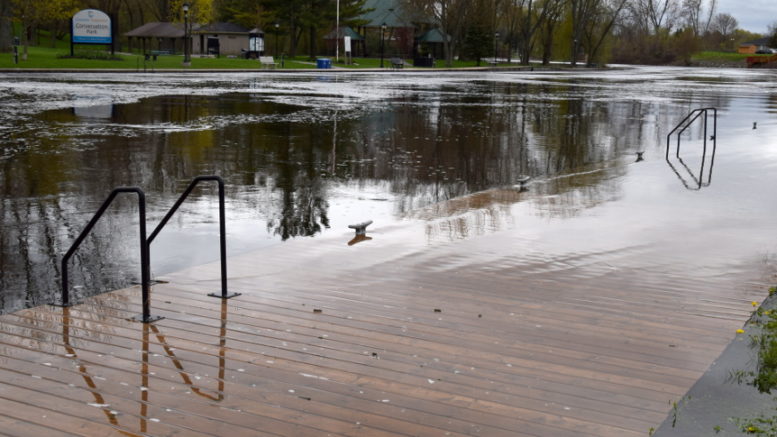Adam Prudhomme
Editor
Greater Napanee mayor Marg Isbester was among six leaders of local municipalities to express disappointment in the response from the International Joint Committee following their call to action on high water levels on Lake Ontario.
Late last month Isbester, along with Greater Napanee deputy mayor Max Kaiser, joined elected leaders from Quinte West, Belleville, Brighton, Prince Edward County and Tyendinaga in requesting the committee in charge of dam controls for the Great Lakes revert to their previous plan, known as 1958-DD.
In response, the IJC says they will review their current plan, known as Plan 2014, but will continue to implement it.
“Since Plan 2014 was implemented in January 2017, Lake Ontario maximum outflows have been determined by the following constraints more than 80 percent of the time: balancing upstream and downstream flooding, preventing ice jams that could severely restrict outflows, avoiding dangerous conditions for navigation, and avoiding flows that would draw the river down below municipal water intakes,” said a letter signed by Jane Corwin and Pierre Béland, chair of the US section and Canadian section of the IJC respectively. “The board would have faced these same constraints if the previous regulation plan had remained in place.”
“The IJC is committed to doing all it can to reduce the flood risk for next year, while taking into account all interests on Lake Ontario and the St. Lawrence River,” the letter continued. “Currently, the Commission and the board are investigating a number of options to further reduce water levels ahead of spring 2020, including flows that could affect the commercial navigation season in the late fall or early spring. We are also seeking the resources to perform an accelerated review of the performance of Plan 2014.”
Isbester said their group will continue to push the IJC to address the issue.
“We’ve got to take it further,” said Isbester. “I realize they have concerns about it too, but we can’t stand by and let the flooding continue. I don’t believe climate change is all of it. We can’t just stand by and not do anything. We did that in 2017 and 2019 came back and hit us again.”
Isbester says they need to find a solution that will benefit all municipalities, even if it means the shipping industry is affected.
“We can’t ask that it’s going to be at the risk of another area getting hit,” said the mayor. “But we’ve seen now two seasons without terribly high precipitation, without terribly high snow amounts. I think certainly there are a few things that might be affecting it. But it’s just the fact they need to keep letting (the water) down longer.”
“We can’t worry about (the effects it could have on shipping),” added Isbester. “We need to worry about the millions and millions of dollars (in damages from flooding and lost revenue in economic development), not to mention the environment because the nutrients and so on is being dragged from the shorelines, back into the water.”
According to the IJC, Lake Ontario outflow rates are controlled at the Moses-Saunders dam.
“The dam is the sole control point of outflows into the St. Lawrence River, and although it can be operated to manage many conditions, it cannot fully address all consequences of the record natural inflows experienced this year.,” said the letter written in response to the six municipalities’ concerns. “Outflows from June 13 to August 21 were the highest sustained outflows on record and continue to be as high as conditions on the St. Lawrence River allow. Lake Ontario continues to decline from its June 2019 peak.”
Isbester expects to meet with the leaders from the other five municipalities in the coming days to discuss their next steps in response to the letter.

